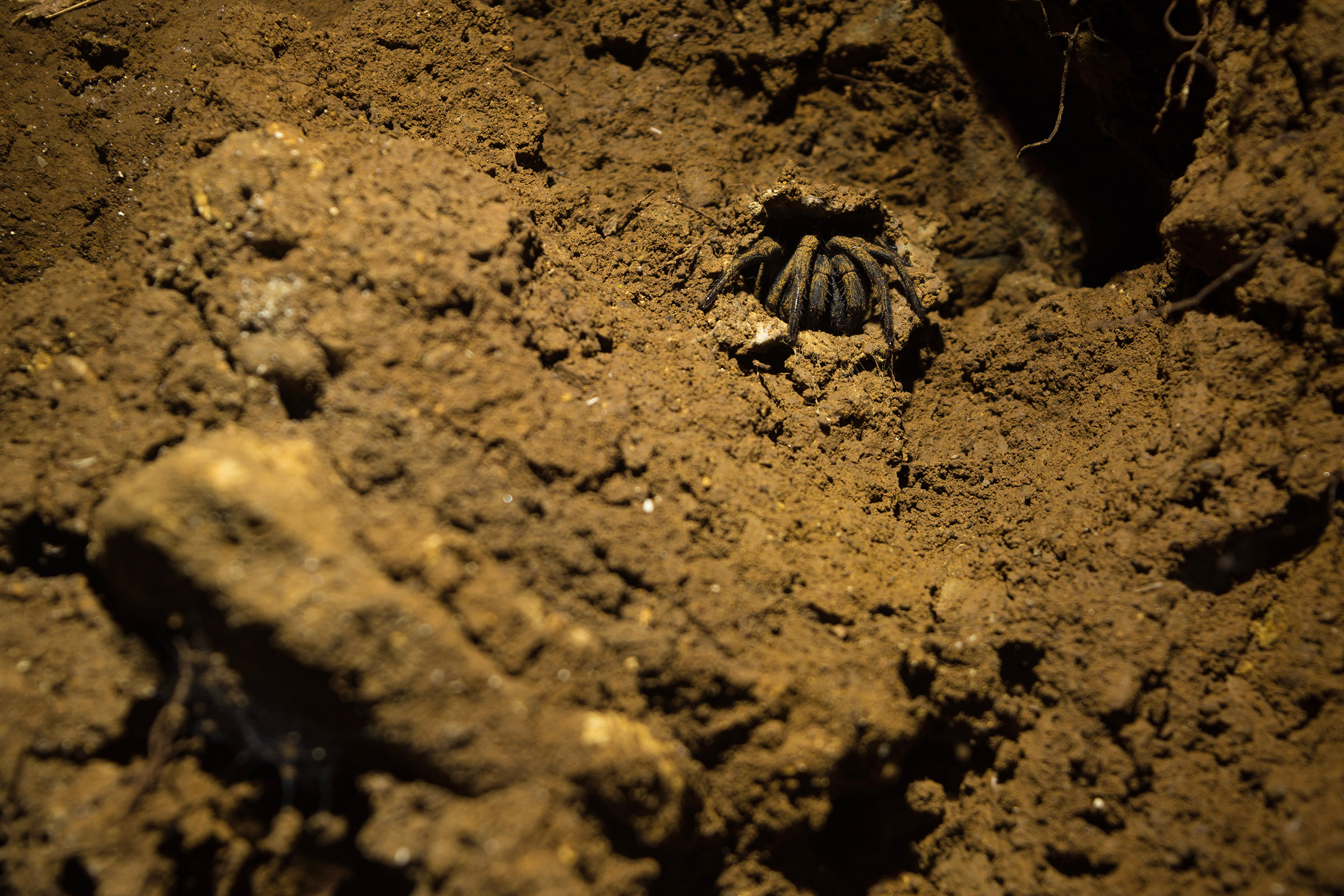While trapdoor spiders can come in all kinds of different sizes, like the massive and nightmarish Euoplos dignitas, or the much smaller brush-footed trapdoor spider, like those found in Australia. Now, though, a new giant trapdoor spider fossils has given us a glimpse at an ancestor of the brush-footed, which is estimated to be four times larger than the modern day species.
The new fossil showcases that the ancient trapdoot spider, which has been named Megamonodontium mccluskyi, has a body that is roughly 23.31 millimeters in size – just under an inch. However, with its legs spread out, researchers believe it could probably fit comfortably in the palm of someone’s hand.
While that might not sound big, it’s roughly four times larger than the current species of brush-footed trapdoor spider found in Australia, showcasing the evolution of these spiders as they grew smaller over the past several million years. That’s because this particular giant trapdoor spider fossil is estimated to be around 11 to 16 million years old.

The fossil was found in a very dry region of Australia called McGraths Flat, which is located in New South Wales. This is also the first of this particular species, and only the fourth spider fossil that has ever been discovered in Australia. So, even though it isn’t as large as some spiders, it’s still a huge discovery, as we don’t have much else to go off when it comes to these ancient spider fossils.
Not only does this discovery reveal new information about the extinction of ancient giant trapdoor spiders, but it also fills a gap in our understanding of the past, and how these spiders have changed over the years. There are roughly 300 different species of brush-footed trapdoor spiders alive in the world today. But they just don’t fossilize well. So, this discovery is significant for understanding their past.
A paper on the discovery is available in the Zoological Journal of the Linnean Society.








